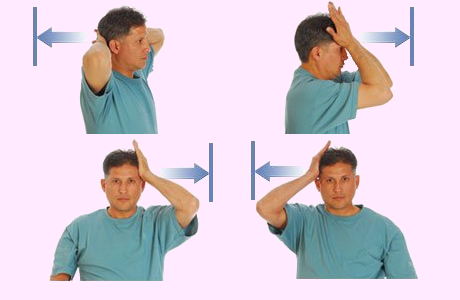CERVICALGIA
Facts about NECK PAIN
Neck pain (or cervicalgia) is a common
problem nowadays, with two-thirds of the population experiencing neck pain at some point of their lives. When your neck is
sore, you may have difficulty moving it, especially to one side. Many people
describe this as a stiff neck. A common cause of neck pain is muscle strain or
tension due to mechanical and postural fault. Usually, everyday activities are
to be blamed. Such activities include bending over a desk for hours, placing
your computer monitor too high or too low, prolonged use of a computer
keyboard, having poor posture while watching TV or reading, straining the neck by cradling the phone on your
shoulder for too long, a strain from
carrying a heavy package or suitcase on one side, sleeping in an
uncomfortable position with your neck at an
improper angle, or twisting and turning the neck in a jarring manner
while exercising.
Neck pain, although felt in the neck, can be caused by numerous other spinal problems.
Neck pain can be due to discomfort in any of the structures in the neck. These
include muscles and nerves as well as spinal vertebrae and intervertebral
discs. If neck pain involves nerves, you may feel numbness, tingling, or
weakness in your arm, hand, or elsewhere. Extreme accidents or falls can
cause severe neck injuries like vertebral fractures, whiplash, blood vessel injury,
and even paralysis.
Most minor injuries from acute neck pain to the muscles,
ligaments, or tendons in the neck will heal within a couple of days or weeks,
as blood supply to these structures carries nutrients and proteins to help heal
the injury. There is a range of treatment options that can significantly reduce
the pain and discomfort while healing is taking place.
How to treat neck pain
The plan of treatment should have 2
aspects.
The 1st thing is to
reduce the pain. For this you should give rest to the musculature around your
neck and shoulder.
You may reduce your activities for first couple of days. Typical
treatments in acute cases include applying ice to the affected
for the first 72 hours before introducing heat. Oral administration of NSAIDs
like Paracetamol, Diclofenac Sodium, Ibufen and local application of analgesic
gels can be started. Electrical modalities like ultrasound therapy, TENS, IFT
are very useful to control the pain even without any medications.
The other aspect of treatment is the preventive and curative
(rehabilitative) approach. We know that the major cause of neck pain is of
mechanical or postural (muscular) origin, so postural correction is needed for
every individual separately to rectify the mechanical deformity. Educating good posture is also a part of the rehabilitation program. Workplace ergonomics modification,
i.e. changing the interiors as needed like adjusting the height of the television
or work station modification or changing sitting arrangement etc. Lifestyle
modification is another important element for treating neck pain includes some
don’ts like forward bending your neck for long time, using phones for long
time etc. Finally the exercise part, that includes Range of Motion exercises,
Static neck exercises and stretching exercises which are equally important. Do not perform activities that
involve heavy lifting or twisting of your back or neck for the first few days
after the pain begins. A physiotherapist can help you decide when to begin ROM,
stretching and strengthening exercises and how to do them. Slowly resume your
daily activity and always practice exercises as advised.



.jpg)
Comments
Post a Comment